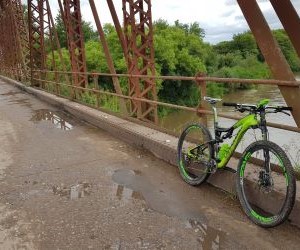Master endurance cycling in tropical climates with effective strategies. Learn hydration, heat adaptation, and training tips for peak performance.
HOW DO I PLAN RECOVERY DAYS IN CYCLING TRAINING?
Cycling performance isn’t built only during hard rides—it develops during recovery. Recovery days allow the body to repair muscles, replenish glycogen, and adapt to training stress. Without proper rest, cyclists risk fatigue, plateauing, or even injury. Smart recovery planning involves alternating intensity, monitoring body signals, and using evidence-based strategies like active recovery rides, nutrition, and sleep optimization. This guide explores how to structure rest effectively for peak performance.

The science of recovery in cycling
Recovery is not laziness—it’s a fundamental part of the training cycle. Stress plus rest equals adaptation. Without recovery, hard training only breaks the body down. Physiological repair processes, like rebuilding muscle fibers and restoring energy systems, happen during downtime, not while pushing watts on the bike.
Why recovery matters
Muscle repair: Microtears from training heal and strengthen during rest.
Energy restoration: Glycogen stores replenish to fuel the next session.
Hormonal balance: Recovery supports testosterone and growth hormone release.
Injury prevention: Adequate rest reduces overuse injuries and joint strain.
Ignoring recovery can trigger overtraining syndrome, characterized by persistent fatigue, poor sleep, irritability, and declining performance. Pro athletes treat recovery as seriously as intervals—and so should amateurs.
How to structure recovery days
Recovery days don’t mean sitting on the couch—though sometimes complete rest is necessary. More often, cyclists benefit from active recovery, where light activity promotes circulation and accelerates healing. Structuring recovery requires balancing effort, timing, and individual needs.
Types of recovery days
Passive recovery: Full rest with no training, ideal after races or heavy training blocks.
Active recovery: Easy spins at low intensity (Zone 1–2) to flush out waste products.
Cross-training: Low-impact activities like swimming, yoga, or walking to reduce monotony.
When to schedule recovery
Most cyclists benefit from 1–2 recovery days per week, depending on training load. A common structure is three hard days followed by a recovery day, or alternating intensity every other day for beginners. Monitoring heart rate variability (HRV), resting heart rate, and subjective fatigue can guide timing.
Signs you need more rest
Persistent soreness lasting more than 48 hours.
Unusually high resting heart rate in the morning.
Decline in power output despite effort.
Mood changes and lack of motivation to ride.
Cyclists should personalize recovery scheduling. What works for a professional training 20 hours a week may not suit an amateur balancing work and family. Flexibility and self-awareness are crucial.
Optimizing recovery strategies
Beyond rest days, cyclists can maximize adaptation with deliberate recovery strategies. Combining nutrition, sleep, and complementary techniques accelerates repair and ensures readiness for the next ride.
Nutrition for recovery
The recovery window is critical. Within 30 minutes post-ride, cyclists should consume carbohydrates to replenish glycogen and proteins to repair muscle. A 3:1 carb-to-protein ratio is widely recommended. Hydration with electrolytes restores fluid balance, especially after hot rides.
Sleep and relaxation
Sleep is the most powerful recovery tool. Aim for 7–9 hours nightly, with naps if training volume is high. Relaxation techniques like meditation, stretching, or foam rolling also calm the nervous system and support adaptation.
Advanced recovery methods
Massage: Reduces soreness and improves circulation.
Compression gear: Helps manage inflammation and swelling.
Cold therapy: Ice baths or contrast showers speed up muscle recovery for some athletes.
Mobility work: Yoga or stretching maintains flexibility and prevents stiffness.
Not all methods work equally for everyone. Cyclists should experiment and track recovery quality through performance metrics and personal feedback.
The art of listening to your body
Technology can guide, but intuition remains invaluable. If your body feels unusually heavy, sluggish, or sore, it may be better to take a full rest day instead of forcing a ride. Long-term gains come from respecting both effort and rest equally.
Cyclists who master recovery scheduling and strategies unlock consistent performance growth. In training, the goal is not to do more—it’s to do better, and that starts with recovery.
YOU MAY ALSO BE INTERESTED






